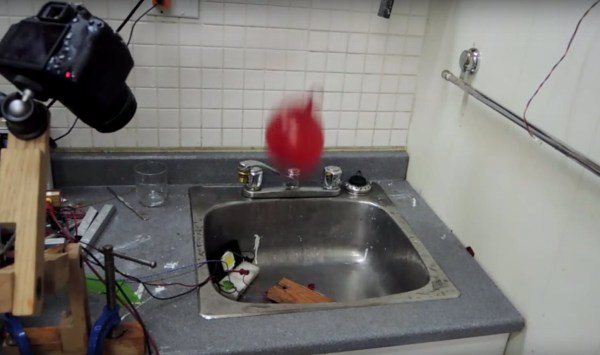A small engineering company in Germany called [Nerdindustries] decided to throw a party, and in doing so, wanted to squash some rumors that nerds only eat pizza and take out. We’d say they successfully one-uped their friends while proving they too can make gourmet food. The gathering included a massive sous vide cooker out of an old 240L aquarium. Be warned, their website presentation is rather annoying but worth it.
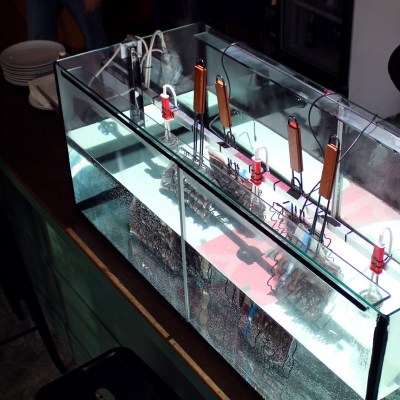 They got the aquarium off eBay for $40, and started the project by resealing the aquarium with some silicone. Water adding some aluminium extrusion they mounted six immersion heaters. Three to heat it to temperature, and another three running off a PID control loop with waterproof temperature sensors to maintain it within a degree or so. Of course that wouldn’t get you very far unless you completed the build by filling the aquarium with water.
They got the aquarium off eBay for $40, and started the project by resealing the aquarium with some silicone. Water adding some aluminium extrusion they mounted six immersion heaters. Three to heat it to temperature, and another three running off a PID control loop with waterproof temperature sensors to maintain it within a degree or so. Of course that wouldn’t get you very far unless you completed the build by filling the aquarium with water.
To make it a bit fancier for the party, they also threw a projector above it to display some simple visuals in the water. For their big night, they cooked steaks at 60C for about an hour and a half, and then finished in a pan to sear before serving — they were a hit. There’s a video on the site, but we can’t embed it here, so you’ll have to go check it out!
Is Sous Vide still a hot topic with hackers? There was a flurry of activity a few years back (Sous Vadar obviously one of our favorites) but we haven’t seen nearly as many projects lately. Actually we recently saw a Sous Vide repurposed for brewing instead of cooking.

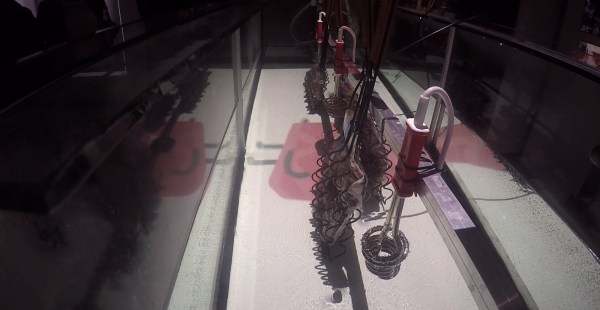

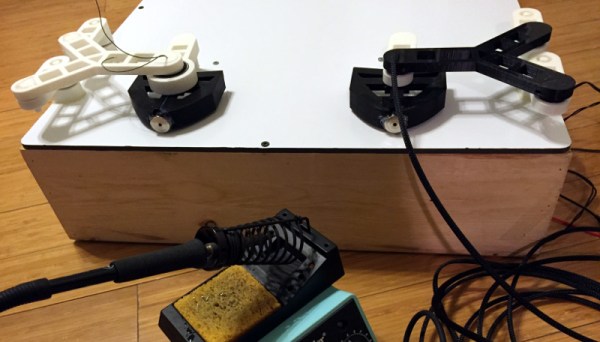
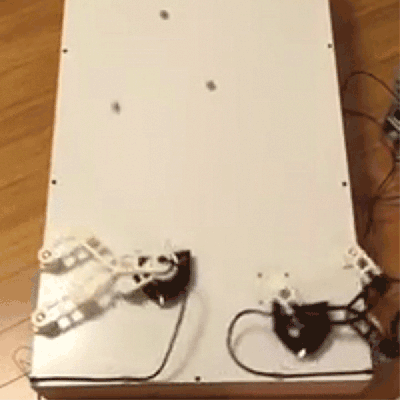 While the original plan was to build a low-cost version that could juggle balls by throwing them up in the air, this proved to be very difficult. Instead of giving up, [Nathan] simplified the problem by rolling the balls up a ramp. The entire build
While the original plan was to build a low-cost version that could juggle balls by throwing them up in the air, this proved to be very difficult. Instead of giving up, [Nathan] simplified the problem by rolling the balls up a ramp. The entire build 